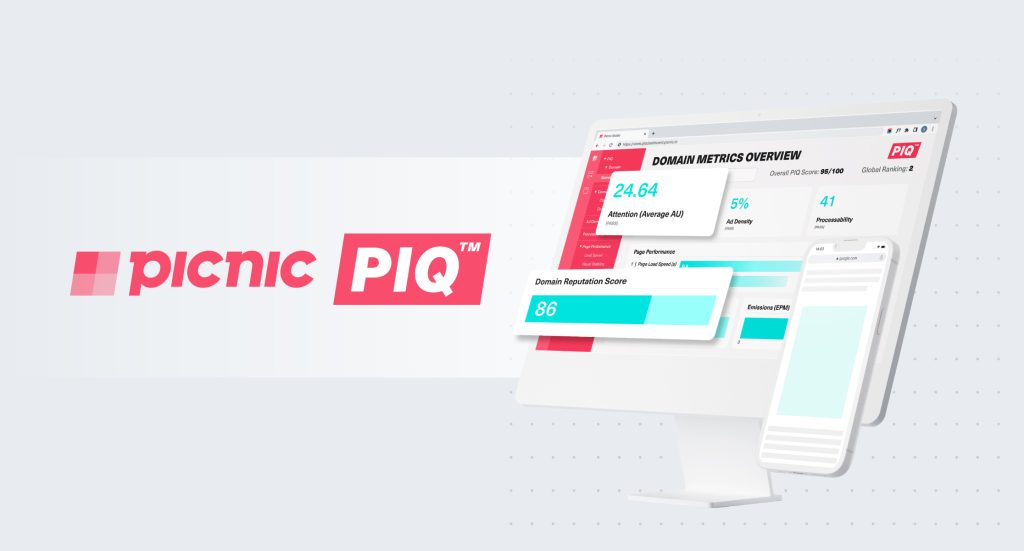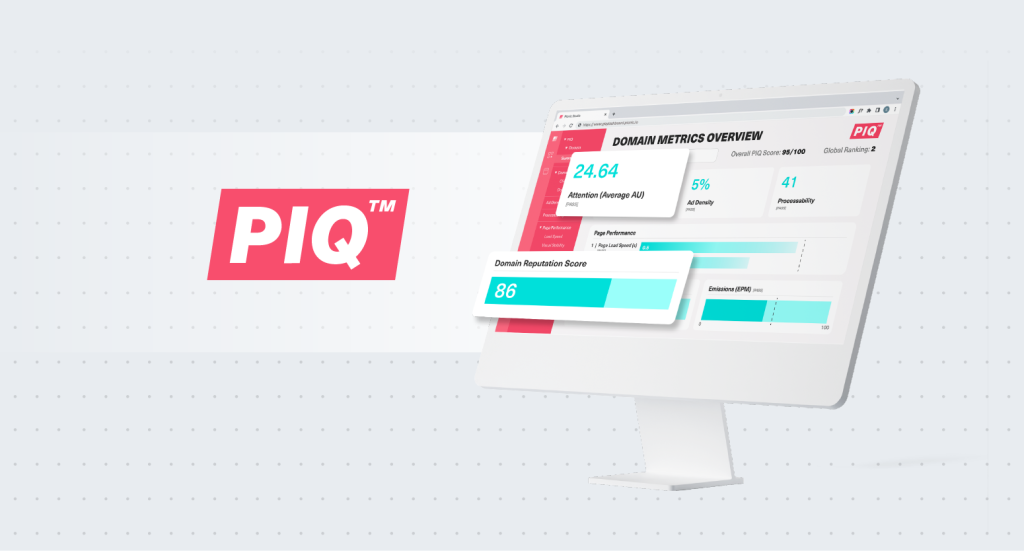Picnic’s new inventory quality assessment tool, PIQ, delivers 88% boost in media attention – empowering advertisers to prioritise effective ad placements
Leading user-first media platform Picnic today announces the launch of PIQ (Picnic Inventory Quality), a first-of-its-kind inventory intelligence platform capable of assessing a webpage’s suitability for effective ad delivery.

Initial tests have demonstrated that PIQ-passing domains achieve 88%* higher media attention versus non-passing domains. The tool can be leveraged to deliver creatives across sites which ensure a great user experience – in turn delivering high attention opportunities and improved brand outcomes.
The end of clickbait?
Media quality has long been impeded by the prevalence of industry performance metrics, such as clicks and viewability, which incentivise low-quality industry practices, such as high ad density and intrusive ad formats. As a result, the ad-funded web is inundated with poor user experiences.
Recent research from Picnic/YouGov confirms intrusive and excessive ads can negatively impact consumer perception of a brand and reduce the likelihood to purchase. Addressing this issue of wasteful – or even harmful – ad impressions, PIQ enables brands and agencies to make sure every ad impression counts.
How does PIQ work?
PIQ analyses a webpage’s suitability based on a range of quality signals such as:
- Ad density: the percentage of a webpage taken up by ads
- Domain reputation: a measure of reputability and trust based on inputs such as the number of backlinks to a domain, and where they come from, as well as content and headline language analysis, determining factors such as clickbait content.
- Page performance: a set of performance metrics, powered by Google’s Core Web Vitals scoring, that evaluate the load speed and visual stability of a webpage.
- Processability: a measure of cognitive load – i.e. the amount of information contained within an image or frame, and the associated mental effort required to understand and engage with an ad – based on the complexity of content, design, and messaging.
- Attention: this includes both historical domain attention and placement level attention measurement – providing media attention opportunity, in addition to creative attention for maximum effectiveness.
- Emissions: Picnic’s marketplace is filtered for low-carbon-emitting pages, using an emissions threshold 20% lower than the Scope3 standards benchmark.

Commenting on the launch of PIQ, Matthew Goldhill, Founder & CEO, Picnic, says: “We believe that a focus on media quality is an important step to secure the future of the ad-funded web as an effective, more sustainable media channel.
Goldhill continues: “The approach is two-pronged – measuring the quality of both the creative and the media. After all, investing in a great creative but delivering it on a poor-quality web page is akin to investing in the Mona Lisa and displaying it on a cluttered gallery wall in your living room. It may technically be viewable, but it’s not going to garner the same attention as it would in a prime spot at the Louvre.”
Key benefits of PIQ
- Inventory quality at scale: objective and measurable assessment using a combination of machine learning and human expertise, guaranteeing brand safety and unrivalled media quality at scale.
- Genuine ad attention and improved outcomes: making every impression count by focusing on media attention – not just creative.
- Enhanced targeting and control: greater user privacy and improved trust in programmatic decision-making
- Deeper insights: granular understanding of the content and placements of media, alongside meaningful analytics that look beyond traditional metrics.
*PIQ domains delivered an average AU score which was 88% greater than the non-PIQ domains, when testing two lines with identical targeting and creative.
Source: Picnic

You must be logged in to post a comment Login